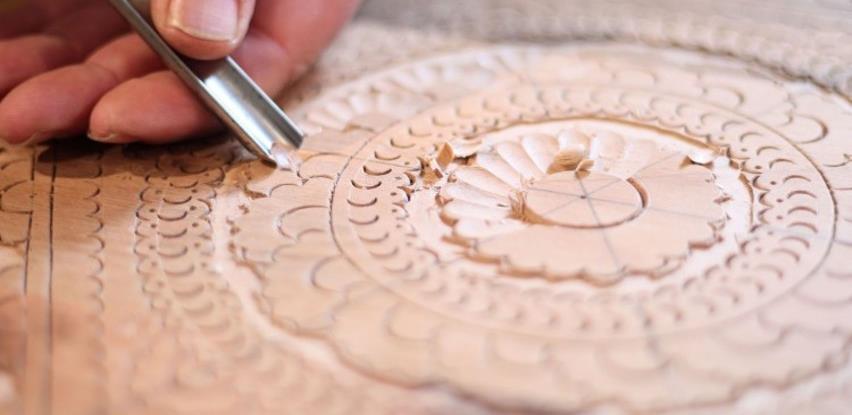The Museum of Woodcarving has networked equestrian woodcarvers and combined all the technique and history of the craft into one story. It is an opportunity, and an example, to promote the cultural heritage of Bosnia and Herzegovina, but also every other heritage.
The Museum, conceived as a “wormhole through time”, tells the story of a century of crafts in the city on the Neretva, a craft that was included in the UNESCO List of Intangible Cultural Heritage of Humanity four years ago.
“Because of that fact, the idea was born to open a museum whose architect is Emir Salkić, and the creators of the idea are the owners of the museum, brothers Adem and Orhan Nikšić,” said the museum’s curator Maja Rajić.
She stated that documents testifying to woodcarving, from the Ottoman period until today, have been placed in the Museum.
“The objects were collected for a long time, most of them were brought from private collections, and some objects were returned from other museums,” said Rajić, noting that the oldest object in the museum is a 19th century sehara inherited by the Nikšić brothers from their grandmother, she inherited it from her grandmother and so on for generations.
Speaking about techniques, patterns and modern woodcarving, she emphasized that in modern design, they do not use traditional patterns, but those made by designers.
Equestrian woodcarvers usually make four types of patterns: traditional equestrian-Bosnian, Istanbul, oriental and woodcarving.
The Museum of Woodcarving in Konjic is popular and interesting to visitors, especially foreigners who are also interested in learning the technique of this craft.
“However, one visit or a short period of time is not enough to learn the basic techniques of woodcarving, it is a demanding craft, but it is certainly interesting to show what we do,” said Rajić, adding that handmade techniques are always interesting.
One of the woodcarvers within the Museum of Handicrafts in Konjic, Ermin Ljevo, has been in this business for two decades. He says that the craft has kept its roots and managed to resist modernization, but also that woodcarvers are trained to do modern design as well.
“We have our four patterns that we work on, but we also paint this new, designer one,” said Ljevo, adding that about 15 woodcarvers are actively working in Konjic, but also that young people are interested in learning and working.
The Museum of Woodcarving in Konjic opened in June 2019, based on the fact that woodcarving was on the UNESCO list two years earlier. The Museum is divided into historical periods, from the Ottoman and Austro-Hungarian periods to the Yugoslav and modern. It is located at the exit from Konjic, on the way towards Mostar.





